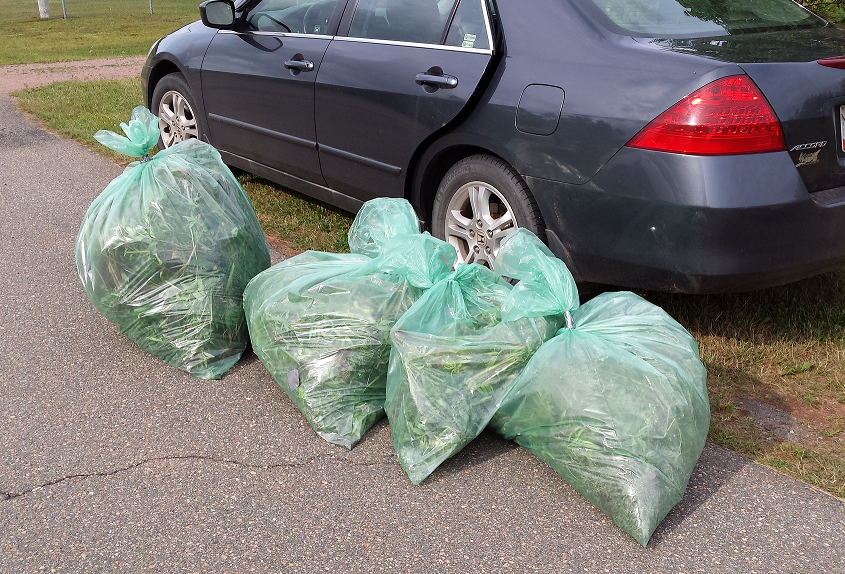Blog & News
Get involved – How you can help
Published on Saturday July 17, 2021
Authored by PEIISC
There are lots of ways to get involved in invasive species control and prevention, from taking simple steps at home or in the outdoors to joining our Spotter’s Network! Here’s how you can help:
At home
- Learn more about the plants in your garden and yard.
If you spot something unusual that seems to be spreading quickly, it may be an invasive. If you are having trouble identifying a possible invasive, send a description and photos of the plant to peiinvasives@gmail.com and we will try our best to ID it for you! - Do your research before heading to the garden centre or purchasing plants online.
Many garden centres still sell invasive species. A key word to be aware of is “groundcover”. If a plant can cover much of the ground space in your garden, it may be an invasive species. Some common examples of invasive often sold as groundcovers are goutweed (Aegopodium podagraria) and periwinkle (Vinca minor). Many invasives are also readily available for purchase online. Remember, if a plant is considered invasive in another jurisdiction, it may also become an invader here! - Dispose of invasive plants properly! If you have less than one ton of invasive plant material to dispose of, no permit is required. Confirm that you have an invasive plant by researching online or contacting us. Place invasive plants in a clear plastic bag and secure. Write plant name (or “invasive plant”) on the bag. Place in waste cart (you can also have up to 2 excess bags beside your cart) OR transport to the nearest Waste Watch Drop-Off Centre and pay applicable disposal fee. If you have more than one ton of invasive plant material to dispose of, a permit is required. Contact the Department of Communities, Land and Environment (902-368-5000) for more information.

In the outdoors
- Carefully inspect and clean clothing, footwear, equipment, animals, and vehicles before visiting a new natural area.
Clothing and footwear are major pathways for invasive species. Many invasives have special adaptations that make them especially good at spreading their seed by attaching to clothing and animal fur. Tip: Include a wire brush in your hiking equipment for removing dirt and debris from hiking boots - Ensure your boat and equipment is clean
before entering or leaving a recreational area. Click here or more information on aquatic invasive species on PEI. - If you are camping, leave your firewood at home.
Instead, buy firewood from a local source where you will be setting up camp. That way, you will not be moving any possible new invaders into new territory. Some invasive insects can bore into wood (e.g. emerald ash borer), while others lay their eggs on wood (e.g. gypsy moth). - Learn to identify invasive plants found on PEI and
report any sightings in natural areas to the PEIISC.

Join us
- Keep an eye out for community weed pulls.
We post any upcoming events on facebook. - Join our Spotter’s Network!
The Spotter’s Network is comprised of professionals and volunteer “spotters” that are trained in identifying and reporting new or uncommon invasive species. Spotters report their sightings to us, so that we may deal with these new invaders before they become widespread!
